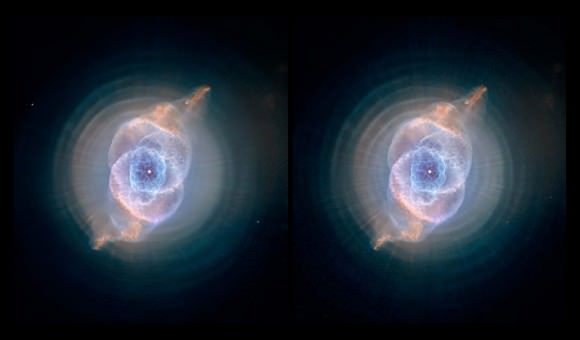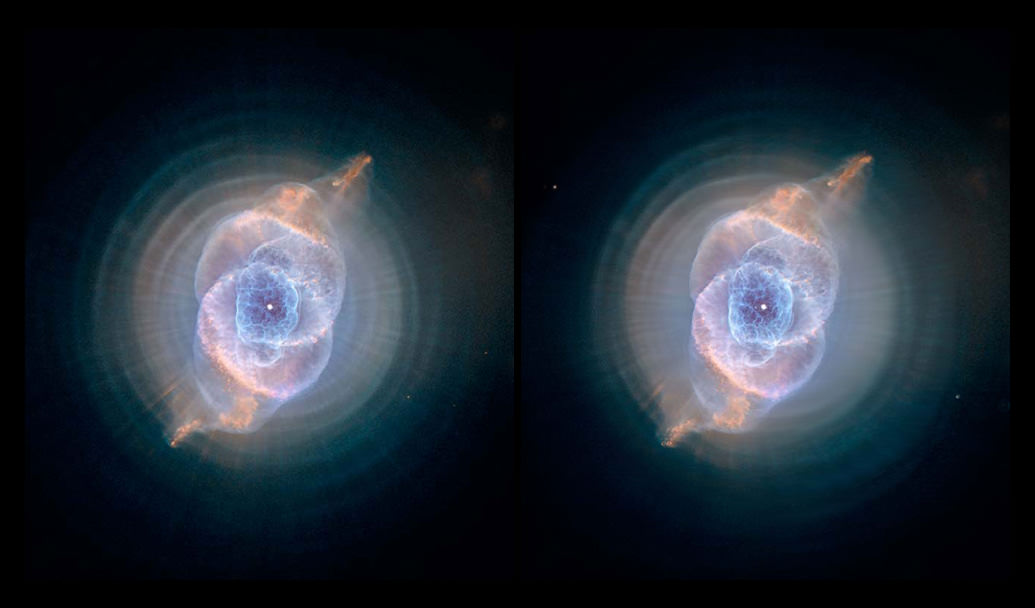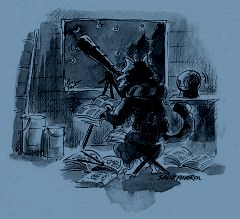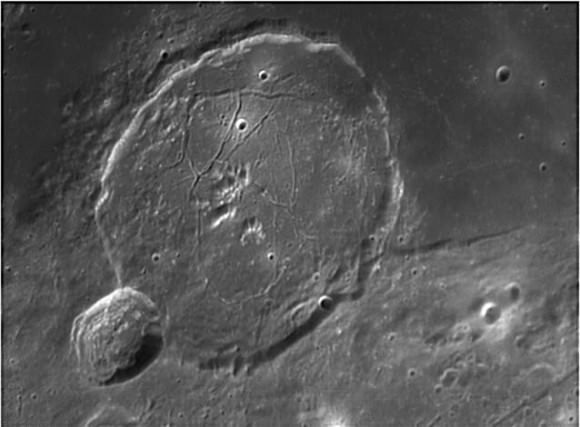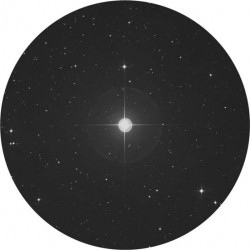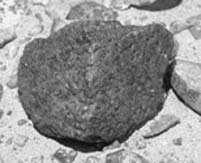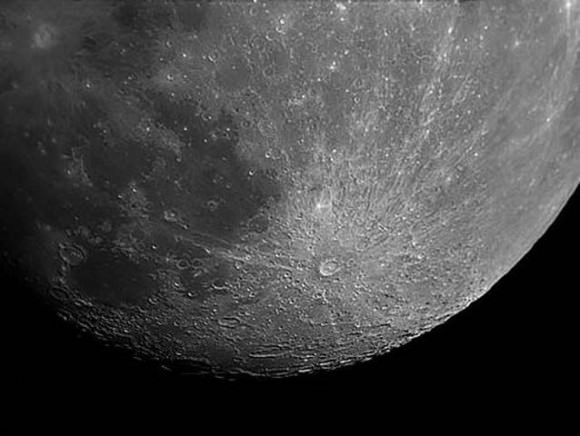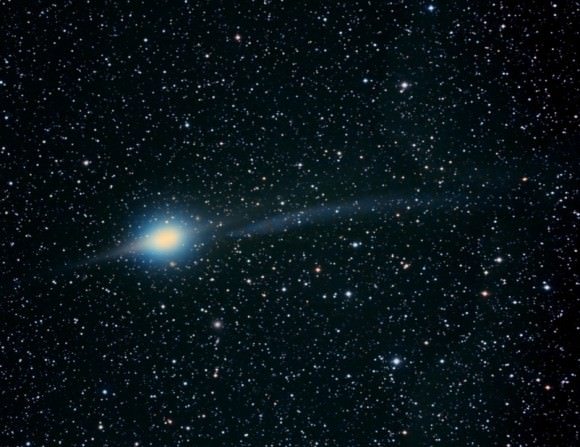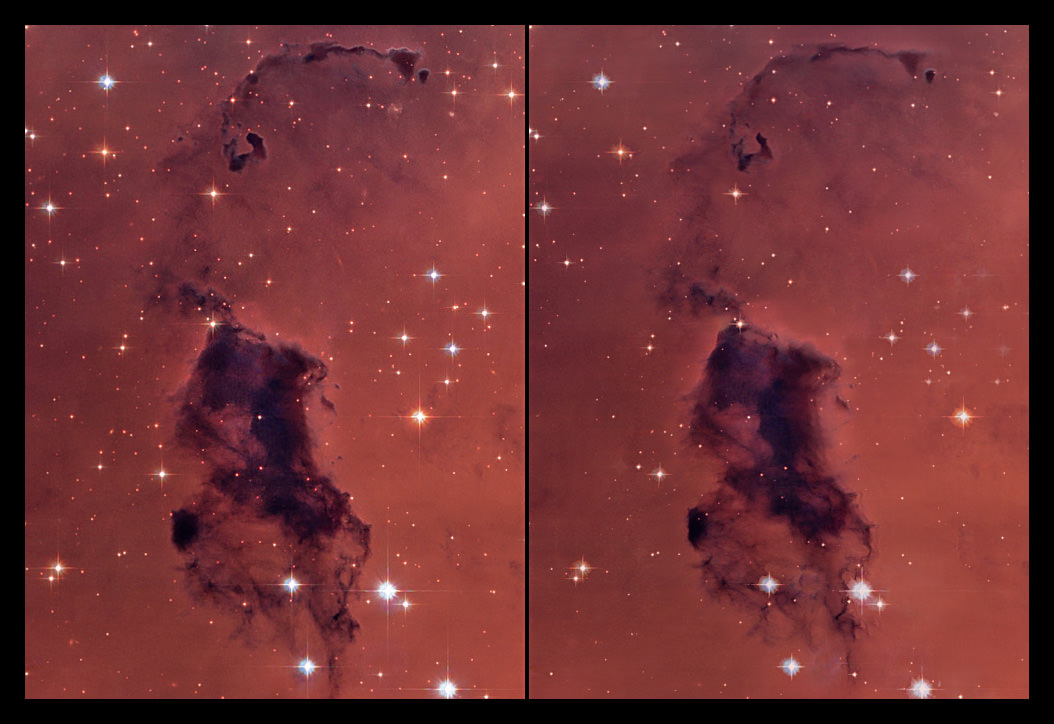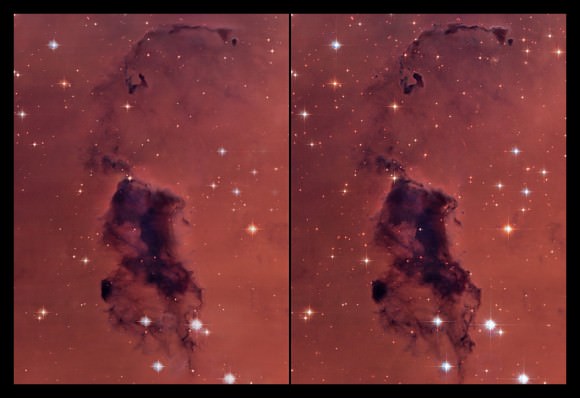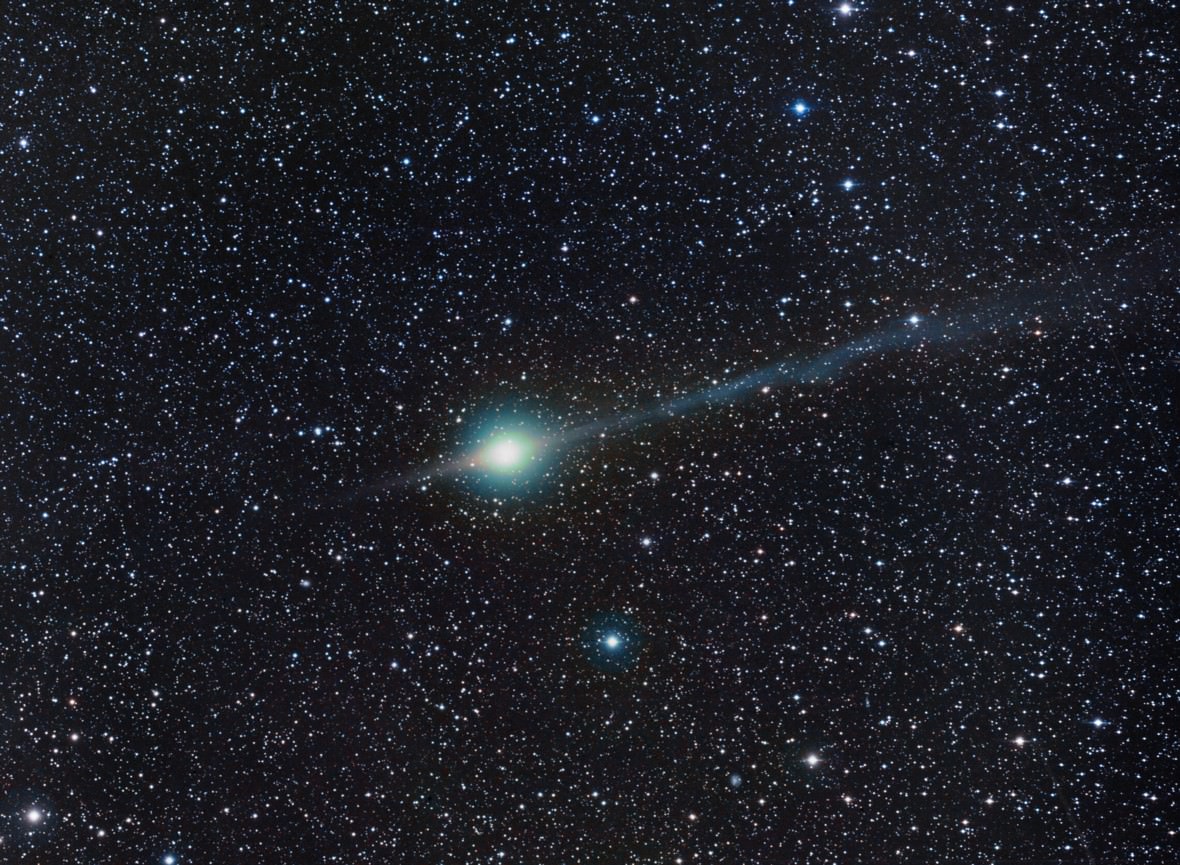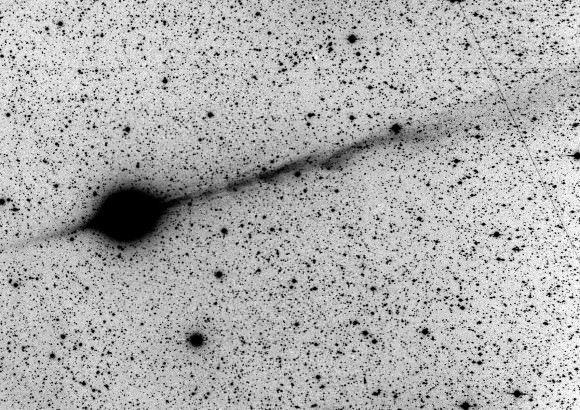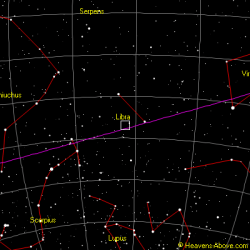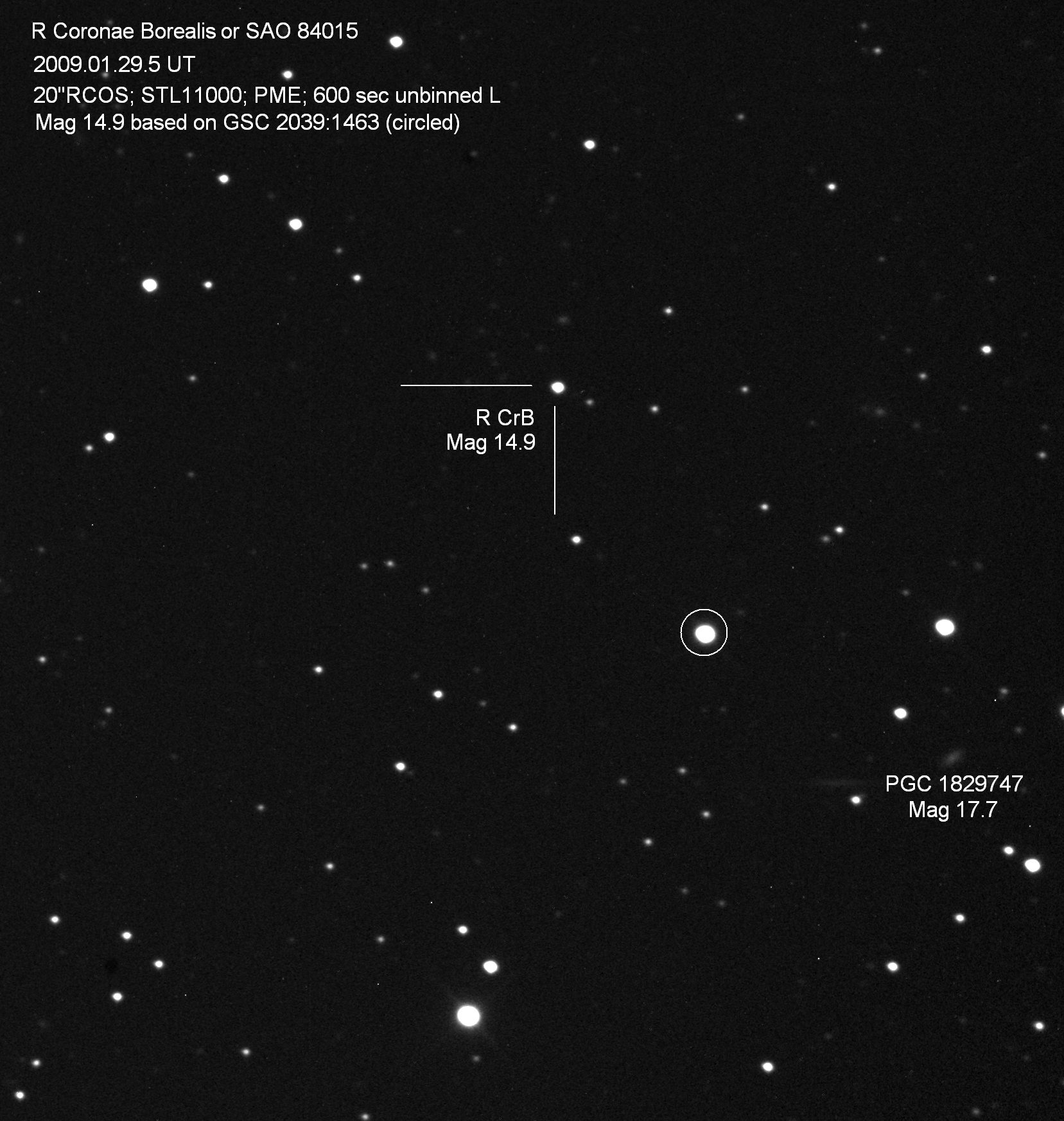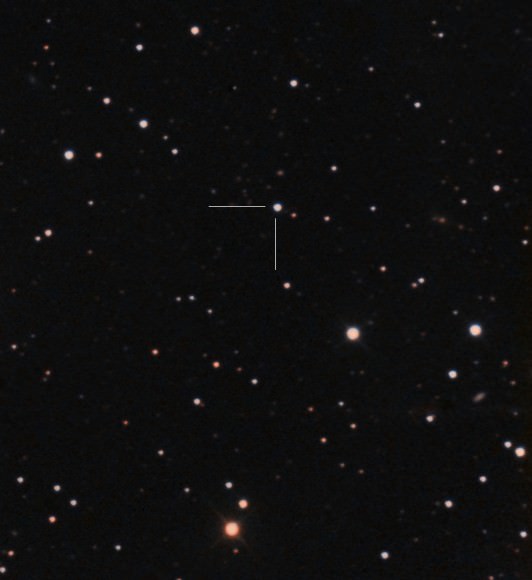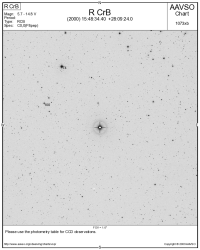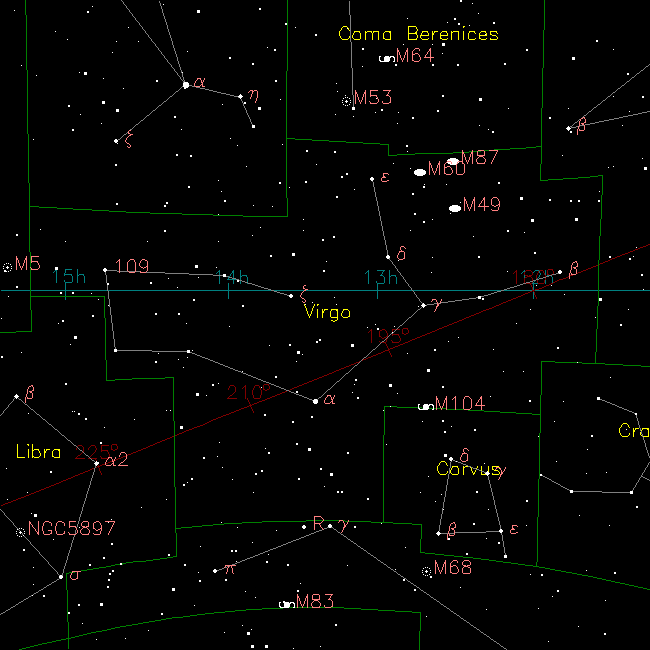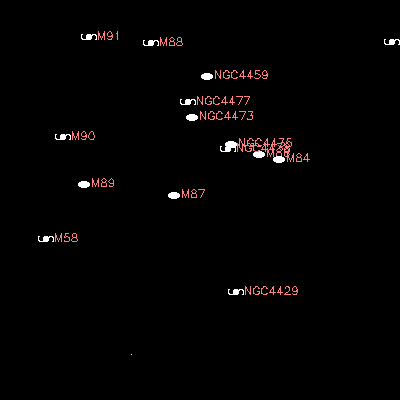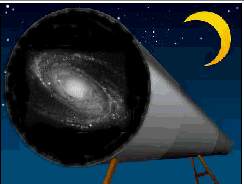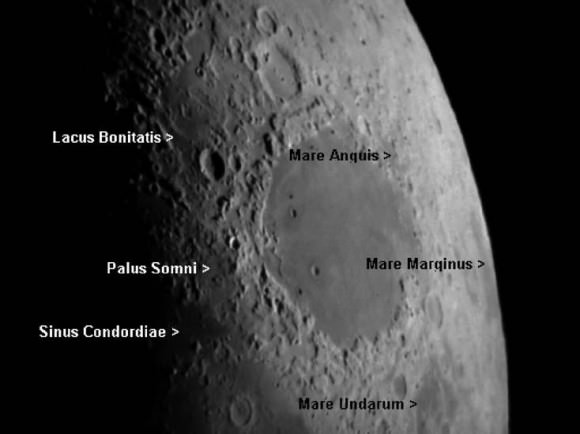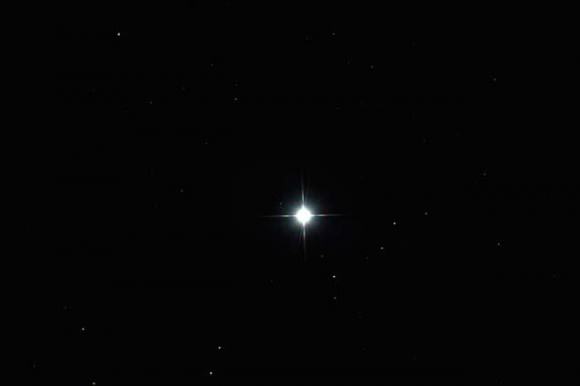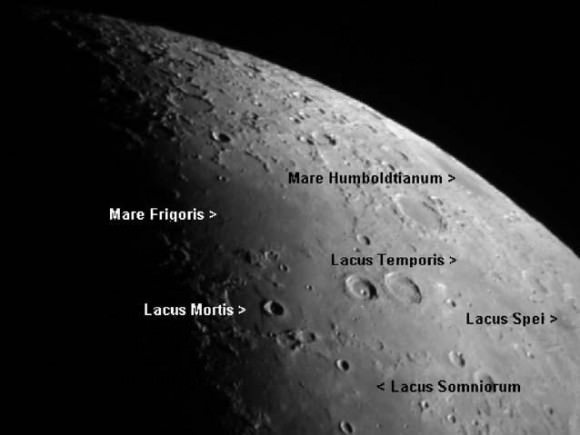Are you interested in taking a more in-depth look at observing? Then why not wait until the Moon sets this weekend and have a look at two splendid galaxies for any size optics – Messier 81 and Messier 82. If you’ve ever been curious about exactly what can be seen in a particular sized telescope, what else is in the area and what the story is behind these two, then come on in…
Welcome, Traveller. Our celestial journey resumes to the north, in the realms of Ursa Major: the Great Bear. “Let my lamp at midnight hour, Be seen in some high, lonely tower. Where I may oft outwatch the Bear.” Our sojourn will take us to a place of intrigue. A realm where two galaxies hold each other in cosmic grip. A place where a single gem of spiral perfection is mounted against a setting of broken interaction. Here we continue our observing quest in exploration of Bode’s Galaxies – twin jewels of the circumpolar north sky – M81 and M82…
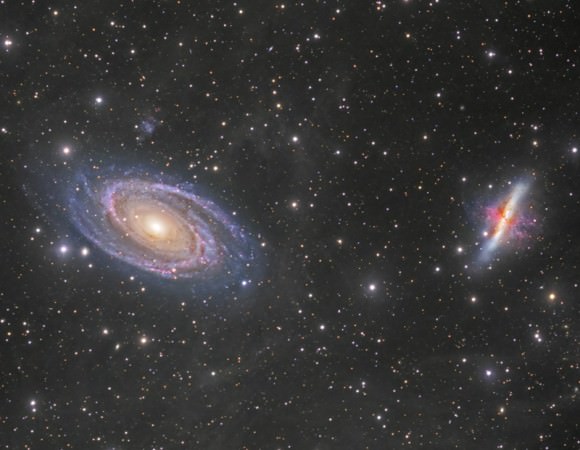
Discovered in December, 1774 by JE Bode at Berlin, these two deep sky favourites hold secrets between themselves. Photographed as early as March, 1899, this pair is central to a group of galaxies encompassing the northern circumpolar constellations of Ursa Major and Camelopardalis. Modern photos (such as at the above taken by Karel Teuwen), show the superb spiral structure of the M81. At some 36,000 light years in diameter, it is one of the densest known galaxies. One third of the mass is concentrated at the core. Its glow is the combined luminosity of twenty billion suns…
Often mistaken in the small telescope for an edge-on spiral, M81’s neighbor – M82 – shows no sign of “swirling”. As a true space “oddity”, the light from M82 journeying back to our eyes is polarized. This galaxy probably contains a super-massive magnetic field. Not only is M82 polarized visually, it is also a powerful radio source. Within its broken structure lay huge masses of dust accompanied by the radiance of stars possessing unusual spectral qualities. These facts lead scientists to believe that a violent outburst may have occurred within the galaxy as recently as 1.5 million years ago… About the time when our own adventurous ancestral species began seeking patterns in the night sky!
It is estimated M82’s defining event released the energy equivalent of several million exploding suns. “Shock waves” emanating from the galaxy greatly resemble synchrotron radiation. This phenomenon was first discovered in association with planetary nebula M1 – but within the M82, on an enormous scale. Can you image a super nova remnant the size of an entire galactic core region?
Roughly every one hundred million years, M81 and M82 make a “pass” at one another. Immensely powerful gravitation arms reach out and intertwine to produce a spectacular embrace. It is theorized that during the last go-round, M82 raised rippling density waves which circulated throughout M81. The result? Possibly the most perfectly formed spiral galaxy in all of space!
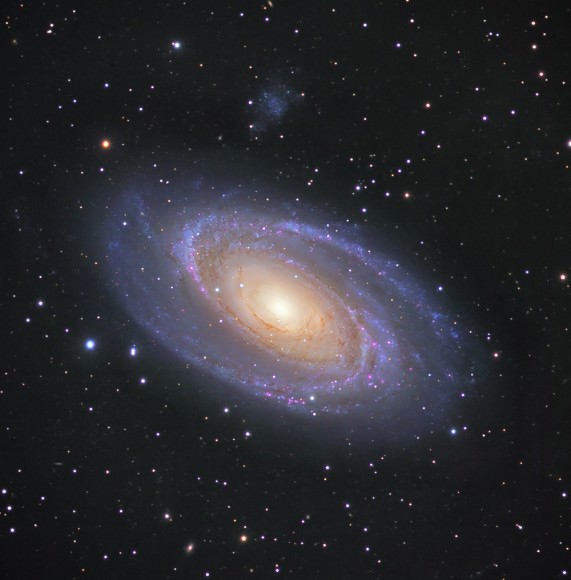
M81 is among the nearest and brightest spiral galaxies, visible even with binoculars at dark sites. It is also is one of the nearest to our Local Galaxy Group, being only some 12 million light-years from our own celestial backyard. As with almost all spiral-structured galaxies, star formation is continuing to take place inside this grand galaxy along the arms. When shown in specific wavelengths of light (like the above photo take by Dietmar Hager, F.R.A.S.) it can be evidenced as pink areas of light where the HII regions exist – while the blue areas are home to countless new stars. It is this incredible energy that makes Messier 81 such a breath-taking spectacle…
But M81’s influence left M82 a broken galaxy. Filled with exploded stars and colliding gas, a galaxy so violent it emits X-rays. Reactions induced by colliding dust and gas caused the birth of these numerous brilliant stars. Stars capable of creating extremely dense atoms… Some of which are now excited by the kind of extreme motion that induces immense magnetic fields.
The end may already be envisioned. Scientists speculate within a few billion years, out of the two, there shall be one… Indistinguishable but for the welter of radiation only such an embrace can create. It is known this same fate awaits our own galaxy. Billions of years from now, our own galaxy and its’ largest neighbor – the Great Spiral in Andromeda – will perform this same duet.
Let’s not talk about just this fascinating galactic duet, however. For the M81 and M82 also have some very unusual playmates! Neighboring galaxy NGC3077 displays some of the same “peculiarities” as its larger companion, M82. At 6,000 light years in diameter, NGC3077 is little more than a third the size of its prototype. Southwest of Spiral M81, is yet another “odd ball”. Like NGC3077, NGC2976 is a dwarf. At less than 1/5th the size of M81, NGC2976 is some 7,000 light years across. A value only three times the distance between our own Sun and the nearby, spectacular Great Nebula in Orion!
Three faint, irregular galaxies are also associated with our galactic pair. The NGC2366 jumps the border into Camelopardalis. IC2574 is found just a bit southeast of the M81 and is a real “toughie” for most telescopes. A smaller system known as Ho II was discovered in 1950 by astronomer E. Holmberg. Even farther into Camelopardis is the large spiral NGC2403, also thought to be a member of the M81/82 “family” of galaxies. As one of the two galaxy groups closest to our own Milky Way system (the other lies in Sculptor), this region presents a fascinating opportunity for study by the backyard astronomer. Why, the main pair can even be seen through 6x35mm binoculars!
So, while we have a relatively dark skies left for a few days, let us turn our telescopes toward study. Drawing an imaginary line between Phecda and Dubhe, we extend that just one step further into space… And Galaxy Quest continues!
Some Basic Information:
Like many galaxies seen at right angles to the Milky Way’s galactic plane, M81/M82 Galaxy Group members are best observed during Spring just after skydark. Of course, these galaxies may be observed year-round from the temperate northern hemisphere, but best views are had when found in the middle third of the sky. Despite the brightness and susceptibility of the main pair, amateurs take it as a source of some pride to readily locate the pair in what amounts to a rather nondescript region of sky.
M81 Ursa Majoris, Type: Spiral Galaxy, Magnitude: 7.0, Apparent Size: 26×14′ RA: 09 55.6, Dec:69 04, Optimal Scope Size: 150mm.
M82 Ursa Majoris, Type: Irregular Galaxy, Magnitude: 8.4, Apparent Size: 11×5′ RA: 09 55.8, Dec:69 41, Optimal Scope Size: 150mm.
NGC2976 Ursa Majoris, Type: Irregular Galaxy, Magnitude: 10.2, Apparent Size: 5×2′ RA: 09 47, Dec:67 54, Optimal Scope Size: 250mm.
NGC3077 Ursa Majoris, Type: Elliptical Galaxy, Magnitude: 9.9, Apparent Size: 5×4′ RA: 09 59, Dec:68 58, Optimal Scope Size: 250mm.
IC2574 Ursa Major, Type: Irregular Galaxy, Magnitude: 10.6, Apparent Size: 13×5′ RA: 10 28, Dec:68 25, Optimal Scope Size: 400mm.
NGC2366 Camelopardalis, Type: Irregular Galaxy, Magnitude: 10.9, Apparent Size: 8×3′ RA: 07 29, Dec:69 13, Optimal Scope Size: 325mm.
NGC2403 Camelopardalis, Type: Spiral Galaxy, Magnitude: 8.4, Apparent Size: 18×9′ RA: 07 36.9, Dec:65 36, Optimal Scope Size: 200mm.
Our Telescopes:
80mm Orion ShortTube Refractor mounted on an Orion Skyview Deluxe Equatorial Mount. Eyepieces include 35/25/15/10mm Orion Ultrascopics, 3x Apochromatic and 2x Shorty Barlow Lenses. This scope is capable of revealing stars to magnitude 12.0 with direct vision. It cleanly resolves matched double stars to 1.5 arc seconds of apparent separation. Under optimal seeing conditions, it can reveal all deepsky studies found in the Messier catalogue. (Optimal seeing is defined as unaided and direct perception of stars to magnitude 5.5 overhead and clean resolution of matched double stars at Dawes limit.)
Celestron 114 Newtonian Reflector with CG3 Equatorial Mount. 10 and 25mm, Celestron SMA, 17mm Orion Sirius Plossl, 9 and 26mm Meade Series 4000 eyepieces plus 2X Orion “Shorty” Barlow. This scopes performance is comparable to the 80mm achromat in double star resolution but is able to go half a magnitude deeper in stellar reach.
150mm Orion Argonaut Maksutov-Cassegrain mounted on an Orion Skyview Deluxe Equatorial Mount. Eyepieces include 35/25/15/10mm Orion Ultrascopics, 3x Apochromatic and 2x Shorty Barlow Lenses. This scope is capable of revealing stars to magnitude 13.4 with direct vision. It cleanly resolves matched double stars to .8 arc seconds in apparent separation. Under optimal conditions, almost all studies described by William Herschel may be found in the night sky.
Meade 318mm Starfinder Newtonian Reflector on Altazimuth Dobsonian Mount. 2 inch 32mm Televue plus 17mm Orion Sirius Plossl, 9 and 26mm Meade Series 4000 eyepieces and 2X Orion “Shorty” Barlow. This “lightbucket” actually resolves matched double stars to .5 arc seconds. Stars to magnitude 15.0 may be held direct under good conditions. It is capable of revealing virtually all members of Dreyer’s New General Catalog plus a number of Index catalog (IC) studies as well!
At the Eyepiece:
M81 & M82:
So Traveller, shall we start with the 80mm? Here we find the M81 shows an obvious starlike core, with bright and extended core region blending into the beginnings of faint spiral arms. Although this showpiece galaxy flares to all directions on eye movement (which basically doubles any scope aperture), it appears somewhat “flattened”, showing a better defined frontier to the west. On nights of superb transparency (and at low magnification – 40x), the broad extensions of the galaxy’s spiral arms may be seen clearly with strongly averted vision. And surprisingly, some five arc minutes north of the galaxy’s core, a faint condensation may be detected. But the limits of small aperture leave the observer wanting more…
So, let’s increase to 114mm… At 53X, we find M81 as a lovely, soft “disc” with an intense core. By increasing the power to 90X, its true spiral form begins to show. Meanwhile, the central portion of the galaxy takes on a very concentrated appearance, and the outer frontiers fade gently away. Still, no “definitive” view of this superfine study, however.
Time to check out the view in the 150mm…
 At 52x, spiral galaxy M81 sports a very bright, star-like central core. It’s core is large, elongated, and displays a considerable luminosity gradient from core-central to faint spiral arms. At this magnification, extended spiral arms require but the slightest aversion of the sight. As large as M81 is, it’s still helpful to bump up the magnification. At 70x, averted vision reveals a certain subtle “spiral-sweep” about the core region. The core itself orients more or less north-south and extends perhaps 5 by 10 arc-minutes in apparent size. This sweep of the core region is larger than many galaxies. A pair of 12th magnitude stars lie just off axis to the southwest. Careful inspection shows that the galaxy as a whole orients toward the more westerly of these two field stars. Under less than optimal conditions, less than half of M81 is susceptible to direct vision. But under optimal conditions, we are rewarded with fine views of large faint splotches of outlying luminosity. Through a six inch instrument, this grand galaxy needs to be doted over to be truly appreciated. While the core is easy, M81’s spiral arms are quite faint and need a good night of seeing to reveal themselves as something more than vague “mounds of luminosity”.
At 52x, spiral galaxy M81 sports a very bright, star-like central core. It’s core is large, elongated, and displays a considerable luminosity gradient from core-central to faint spiral arms. At this magnification, extended spiral arms require but the slightest aversion of the sight. As large as M81 is, it’s still helpful to bump up the magnification. At 70x, averted vision reveals a certain subtle “spiral-sweep” about the core region. The core itself orients more or less north-south and extends perhaps 5 by 10 arc-minutes in apparent size. This sweep of the core region is larger than many galaxies. A pair of 12th magnitude stars lie just off axis to the southwest. Careful inspection shows that the galaxy as a whole orients toward the more westerly of these two field stars. Under less than optimal conditions, less than half of M81 is susceptible to direct vision. But under optimal conditions, we are rewarded with fine views of large faint splotches of outlying luminosity. Through a six inch instrument, this grand galaxy needs to be doted over to be truly appreciated. While the core is easy, M81’s spiral arms are quite faint and need a good night of seeing to reveal themselves as something more than vague “mounds of luminosity”.
Increasing the aperture again to 310mm, let’s go to the eyepiece…
 At minimum magnification (60X), the M81 does indeed remind one of a miniature “Andromeda” galaxy. The intense core, the sense of spiral arms folding round, all say “Grand Spiral”. But let’s head to a “higher power” (170X) and rock out structure. At this magnification, indications of dark dustlanes begin to exist at the outer edges. The central formation of the galaxy itself is impenetrable. More than two-thirds of its’ structure holds even concentration and makes the core area intense. It is toward the elongated edges that our attention is drawn with direct vision. Here are the classic “spiral arms” we’ve been looking for! At the highest of magnifications (312x), they fold themselves very close to the body of the M81, with each “tip” extending both above and below the central structure evenly. At the outermost fringes of these arms, averted vision reveals the mottling of distant clusters, and a sense of “trailing away” that give this well-endowed spiral real “class”!
At minimum magnification (60X), the M81 does indeed remind one of a miniature “Andromeda” galaxy. The intense core, the sense of spiral arms folding round, all say “Grand Spiral”. But let’s head to a “higher power” (170X) and rock out structure. At this magnification, indications of dark dustlanes begin to exist at the outer edges. The central formation of the galaxy itself is impenetrable. More than two-thirds of its’ structure holds even concentration and makes the core area intense. It is toward the elongated edges that our attention is drawn with direct vision. Here are the classic “spiral arms” we’ve been looking for! At the highest of magnifications (312x), they fold themselves very close to the body of the M81, with each “tip” extending both above and below the central structure evenly. At the outermost fringes of these arms, averted vision reveals the mottling of distant clusters, and a sense of “trailing away” that give this well-endowed spiral real “class”!
Now, let’s go back to the 80mm and examine the M82…
On shifting the field to the more northern M82, we immediately catch the dark vertical break that splits this edge on west of the galaxy’s irregular core. Direct inspection of the galaxy fails to show more than where the break occurs – since little of luminosity can be seen further west of the discontinuity. Both the northern and southern frontiers are well defined and quite linear – even under marginal conditions. Aversion of the sight shows a bit of an extended halo outside the bounds of the flanking frontiers. We also note that the eastern extension shows a well defined “daggerlike” blade and tip.
At 114mm, that first view at low power (36X) screams “edge-on”! But, with patience and practice, delicate detail with averted vision begins to form, and the dark break becomes perceivable. Increasing the magnification to 90X makes this division more apparent, and causes the M82 to appear “spindle-shaped”… much like a child’s dirty kite string wrapped round a stick. Very little in the way of structure is seen, other than the fact than it’s lumpy.
Let’s move to 150mm…
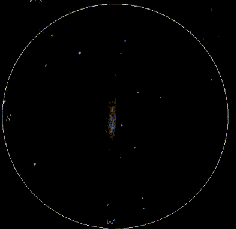 M82 stretches out perhaps 10 arc-minutes east and west like a knife splitting the sky. It’s core is not of the luminous star-like variety… A gradual brightening is seen from one end of the galaxy to the center and back again to the opposite extreme. Unlike M81, the change is very gradual. A curious kneadiness or mottling is apparent – especially to the west. This edge-on irregular galaxy is broken by a dark lane along its southern frontier. The lane is not visible – only the sharpness by which it truncates the galaxy. In addition, a more obvious cleft of darkish matter divides the trailing half of the core. Overall, the visible part of the galaxy covers a region perhaps 2 by 8 arc-minutes in apparent size. A pair of 11th magnitude stars are visible west-southwest. In many ways M82 is more interesting than M81. It’s beauty lies in subtle variations of surface brightness which defy notions of pattern and verbal description.
M82 stretches out perhaps 10 arc-minutes east and west like a knife splitting the sky. It’s core is not of the luminous star-like variety… A gradual brightening is seen from one end of the galaxy to the center and back again to the opposite extreme. Unlike M81, the change is very gradual. A curious kneadiness or mottling is apparent – especially to the west. This edge-on irregular galaxy is broken by a dark lane along its southern frontier. The lane is not visible – only the sharpness by which it truncates the galaxy. In addition, a more obvious cleft of darkish matter divides the trailing half of the core. Overall, the visible part of the galaxy covers a region perhaps 2 by 8 arc-minutes in apparent size. A pair of 11th magnitude stars are visible west-southwest. In many ways M82 is more interesting than M81. It’s beauty lies in subtle variations of surface brightness which defy notions of pattern and verbal description.
Shall we seek in the 310mm? Then let’s find some answers…
 At moderate magnifications (90X), M82 begins revealing structure to direct vision. The dark “break” one third of the way across its’ breadth is fully apparent, and the thickening portions along the body of the galaxy itself warrant closer investigation. Moving now to higher magnification (170X), we get the structure we were looking for… The galaxy no longer can be called “edge-on”, and clotted appearance of what must be thousands upon thousands of clusters make this one truly fine. The central portion bears no nucleus… pardon the descriptor, but it looks like cottage cheese! Toward one end, the dark division holds the lump of galactic mass in a gravity “lock”, and bleeds away into what almost appears with averted vision to be several open clusters. At the other end of the M82, all thoughts of resolution stop. Here the galactic matter appears to be “smeared”… as if the inner concentration of stars might perhaps be calmer, somehow. A very fine galaxy… It has earned its’ classification as irregular.
At moderate magnifications (90X), M82 begins revealing structure to direct vision. The dark “break” one third of the way across its’ breadth is fully apparent, and the thickening portions along the body of the galaxy itself warrant closer investigation. Moving now to higher magnification (170X), we get the structure we were looking for… The galaxy no longer can be called “edge-on”, and clotted appearance of what must be thousands upon thousands of clusters make this one truly fine. The central portion bears no nucleus… pardon the descriptor, but it looks like cottage cheese! Toward one end, the dark division holds the lump of galactic mass in a gravity “lock”, and bleeds away into what almost appears with averted vision to be several open clusters. At the other end of the M82, all thoughts of resolution stop. Here the galactic matter appears to be “smeared”… as if the inner concentration of stars might perhaps be calmer, somehow. A very fine galaxy… It has earned its’ classification as irregular.
NGC2976:
Continuing with our study, we break away from this splendid galactic pair, and move onward toward yet another… This galaxy “lives” within a large house of 10th and 11th magnitude stars south-southwest of M81. The peaked-roof of the house lies to the east. And its’ name? NGC2976…
Starting with our 80mm refractor, this galaxy is difficult, but positively located within the same “house-shape” of stars. The sense of large apparent size remains present. Quite diffuse overall with slight condensation, it requires extreme aversion. Despite a dearth of structure, the galaxy hints at north-south orientation with a possibly better defined frontier to east.
Moving now to the 114mm newtonian reflector, we find it is detectable at 114mm in aperture… but that is all it is. A soft, elongated smudge that requires averted vision just to make out form.
Through 150mm at 52x and under 5.0 ULM conditions, NGC2976 appears large and diffuse. Maybe 3×5 arc minutes of the galaxy is possible with a southeast to northwest orientation. It displays a large, but dim core region. This gives it a sense of structure.
On eye movement, the galaxy flares to all directions, but less so to the southwest. It’s core region appears quite large, football shaped and diffuse. Bumping the magnification to 70x gives the core a somewhat edge-on appearance. At 120x the low surface brightness of this large galaxy causes it to completely dissolve.
 At 310mm in aperture, the NGC2976 does not rock out detail in an expected fashion either, Now we are talking about being able to hold this galaxy direct, which means averted should bring out structure… What structure?! A tear drop, grainy-looking patch on the night with a bright star at the edge, tapering off into a chain of stars… That’s it. No sense of a nucleus…. no apparent fading at frontiers.
At 310mm in aperture, the NGC2976 does not rock out detail in an expected fashion either, Now we are talking about being able to hold this galaxy direct, which means averted should bring out structure… What structure?! A tear drop, grainy-looking patch on the night with a bright star at the edge, tapering off into a chain of stars… That’s it. No sense of a nucleus…. no apparent fading at frontiers.
Time to move on? You bet! Let’s head off to capture another…
NGC3077:
Going to the 80mm, we find this galaxy easily located but lacking structure under direct perception. NGC3077 is small and diffuse, with faint extensions north and south. Sense of vague truncation (flattening) to east along with a soft, but perceptible degree of central condensation. Extreme aversion of the eye is needed to make out any of these details.
Now, moving on to the 114mm we find the NGC3077 is also detectable… as a very dim glow of galactic light with extreme averted vision, and one pinpoint star nearby.
Shifting our view points to 150mm we find at 52x and a 5.0 sky, this vaguely football-shaped galaxy is easily located but lacks obvious structure. There is a subtle sense of east-west orientation. Perceptible flaring appears on eye movement to all directions -except north. This lack of northern flaring hints at a dark lane that direction. A very faint star-like point can occasionally be seen near the center of the nebulosity. A slight amount of central condensation is possible but the lack of a defined core region means a very loose and diffuse appearance.
At 70x, the faint starlike-nucleus occasionally seen at 52x becomes a bit more consistent. The beginnings of a core region also emerges. At 120x a roundish blue core region with a soft, “unstarlike” nucleus can be seen, but the bulk of the galaxy is lost to sight for lack of photons…
 Going to the 310mm dobsonian at differing ranges of magnification changes the picture just slightly. The most pleasing view is at 180X. Here we see an egg-shaped elliptical… evenly lighted, but there is a certain amount of degeneration at the edges… a sense that the light is being eroded away. Several field stars are also visible. A chain of three varying magnitudes to one side, and an elongated rectangular structure to the other.
Going to the 310mm dobsonian at differing ranges of magnification changes the picture just slightly. The most pleasing view is at 180X. Here we see an egg-shaped elliptical… evenly lighted, but there is a certain amount of degeneration at the edges… a sense that the light is being eroded away. Several field stars are also visible. A chain of three varying magnitudes to one side, and an elongated rectangular structure to the other.
Ready to rock on? Then let’s head toward a particularly difficult study…
IC2574:
 IC2574 is next. Welcome only to large aperture telescopes! Once again, a faint, elongated, lumpy bar of light. This one shows “lobes” of concentration at either end of it’s structure. Not only does this one appear as “lumpy”… but there are a great many field stars that accompany it… like very precise open clusters! They are vague… and when the dob presents you with vague light in the presence of pinpoint stars, we would venture to say that this galaxy is accompanied by some nebulosity.
IC2574 is next. Welcome only to large aperture telescopes! Once again, a faint, elongated, lumpy bar of light. This one shows “lobes” of concentration at either end of it’s structure. Not only does this one appear as “lumpy”… but there are a great many field stars that accompany it… like very precise open clusters! They are vague… and when the dob presents you with vague light in the presence of pinpoint stars, we would venture to say that this galaxy is accompanied by some nebulosity.
Right? Wrong? It’s a study… and we’re not through yet. So let’s head on back to our galaxy hunt, and see what else we can find. Another faint member of this group stretches across the border into Camelopardis. It is also a rather difficult study… But that’s why we’ve brought along the power of aperture.
NGC2366:
 Between apparent size and surface brightness, the NGC2366 is best left to the larger scope. Detectable as low as 48X as a tiny, grainy bar of light, the best view comes at 170X. At this magnification, the NGC2366 takes on structure. Several areas of light concentration are seen, making it appear as though it has three centers. Adding the barlow and increasing to 340X pulls the picture in much closer, losing hard edge clarity, but reveals at one end, a notch occurs in the galaxy… Much like a crescent wrench. Opposite of this “notch” is also what may either be a small open cluster, or perhaps a bit of wayward galactic material. Going back to 170X is much more comfortable, and the lumpy figure of the NGC2366 most definitely has earned its’ classification as an “irregular” galaxy!.
Between apparent size and surface brightness, the NGC2366 is best left to the larger scope. Detectable as low as 48X as a tiny, grainy bar of light, the best view comes at 170X. At this magnification, the NGC2366 takes on structure. Several areas of light concentration are seen, making it appear as though it has three centers. Adding the barlow and increasing to 340X pulls the picture in much closer, losing hard edge clarity, but reveals at one end, a notch occurs in the galaxy… Much like a crescent wrench. Opposite of this “notch” is also what may either be a small open cluster, or perhaps a bit of wayward galactic material. Going back to 170X is much more comfortable, and the lumpy figure of the NGC2366 most definitely has earned its’ classification as an “irregular” galaxy!.
NGC2403:
On to our last study, the NGC2403… This one is definitely a “all scopes” kinda’ galaxy!
In the 80mm there is nothing diffuse about this galaxy. Orienting northwest to southeast, it displays a well-developed northwest spiral extension and surprisingly little to the southeast. (Giving NGC2403 a very “cometlike” appearance.) This baby is definitely overdeveloped. No starlike core, just a general brightening toward the center. Bright stars flanking it complicate the view. It’s not hard to be both baffled and impressed by this bright galaxy way out in the reaches of Camelopardis.
Easily found and recognizable in the 114mm at 17mm as a spiral, the little scope pulls out a stellar core and definately sense of fading toward the frontiers.
Moving up to 150mm, we find that although NGC2403 fails to rival Bode’s Galaxies in terms of brightness and structure, it makes a good run for it. The galaxy is large, conspicuous and possesses a well-defined northern frontier, starlike core and extended core region. It also presents mostly edge-on (cigar-shaped) and shows well even under marginal 5.0 ULM skies.
At 70x, two faint spiral extensions are possible, with the western extension more obvious than the east. This gives the sense of the core region being offset in that direction. At 120x, a tiny blue nucleus can just be held with slight aversion. Complicating the view of this galaxy are a series of bright 7th and 8th magnitude stars flanking it along the southern frontier.
 314mm time? Oh, yeah… Now here is some superior structure! Mottling begins even with as little magnification as 60X. Adequately large enough to be studied at lower magnifications, we find the view at 90X the most pleasing. Concentrated, egg-shaped nucleus… one soft “horseshoe” of a dark dust lane, and hints of globular clusters that cry out for more. Comply? Of course. Let’s set 170X on it… We have what appears to be globular structure in a very “open” looking arm. Not only here, but several knots exist throughout the NGC2403. And yet again, we “make out” something that looks like a small, attendant open cluster. No nearby bright stars at magnification as markers, the field is nothing more than some fine chains… But who cares? Cuz’ this is one fine galaxy!!
314mm time? Oh, yeah… Now here is some superior structure! Mottling begins even with as little magnification as 60X. Adequately large enough to be studied at lower magnifications, we find the view at 90X the most pleasing. Concentrated, egg-shaped nucleus… one soft “horseshoe” of a dark dust lane, and hints of globular clusters that cry out for more. Comply? Of course. Let’s set 170X on it… We have what appears to be globular structure in a very “open” looking arm. Not only here, but several knots exist throughout the NGC2403. And yet again, we “make out” something that looks like a small, attendant open cluster. No nearby bright stars at magnification as markers, the field is nothing more than some fine chains… But who cares? Cuz’ this is one fine galaxy!!
Parting Thoughts:
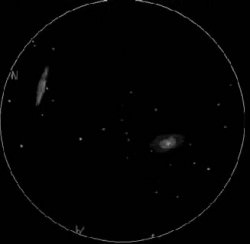 And so we have journeyed eight million light-years across the night together. And still I would stay with you, Traveller. For a hundred billion more. “The Bear that sees star setting after star… In the blue brine, descends not to the deep.” The stars, the night, and the far flung universes awaits you …
And so we have journeyed eight million light-years across the night together. And still I would stay with you, Traveller. For a hundred billion more. “The Bear that sees star setting after star… In the blue brine, descends not to the deep.” The stars, the night, and the far flung universes awaits you …
My many thanks to Karel Teuwen and Deitmar Hager, F.R.A.S. of Northern Galactic for their outstanding images and I would like to gratefully acknowledge Jeff Barbour for being a major contributor to both the studies and writing that went into this article. It’s nice to be able share the view through an 80mm refractor and 150mm SCT from 3,000 miles away!
